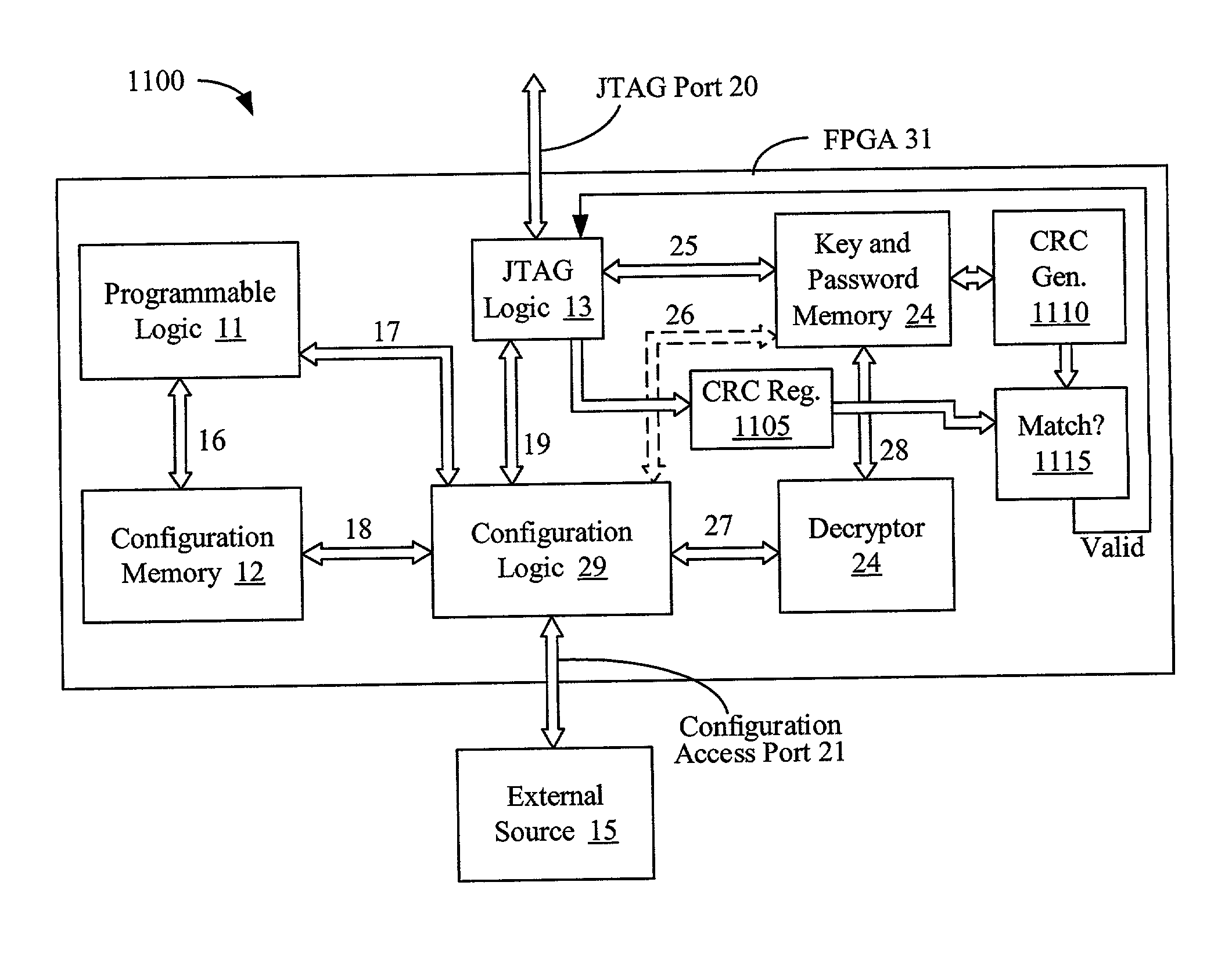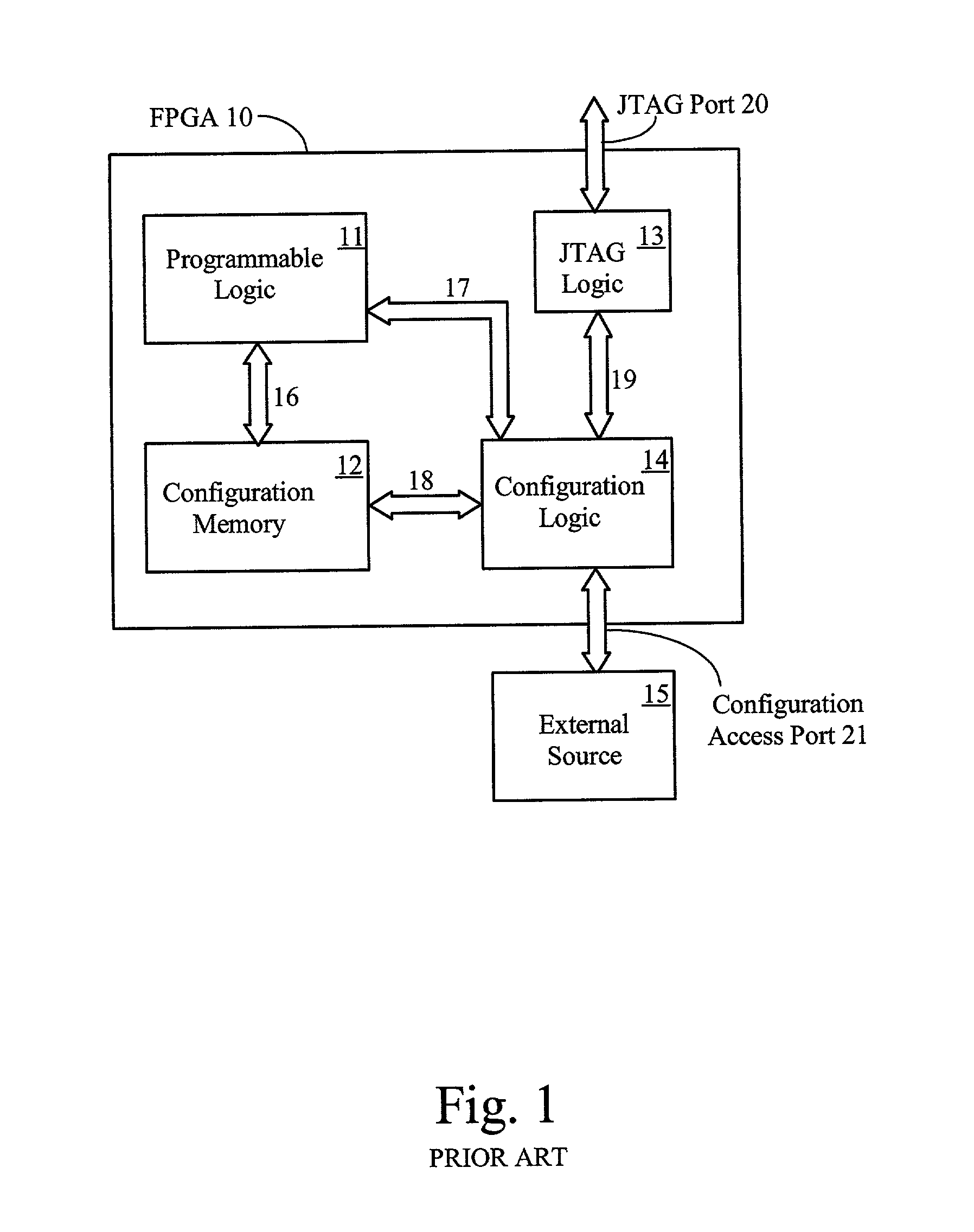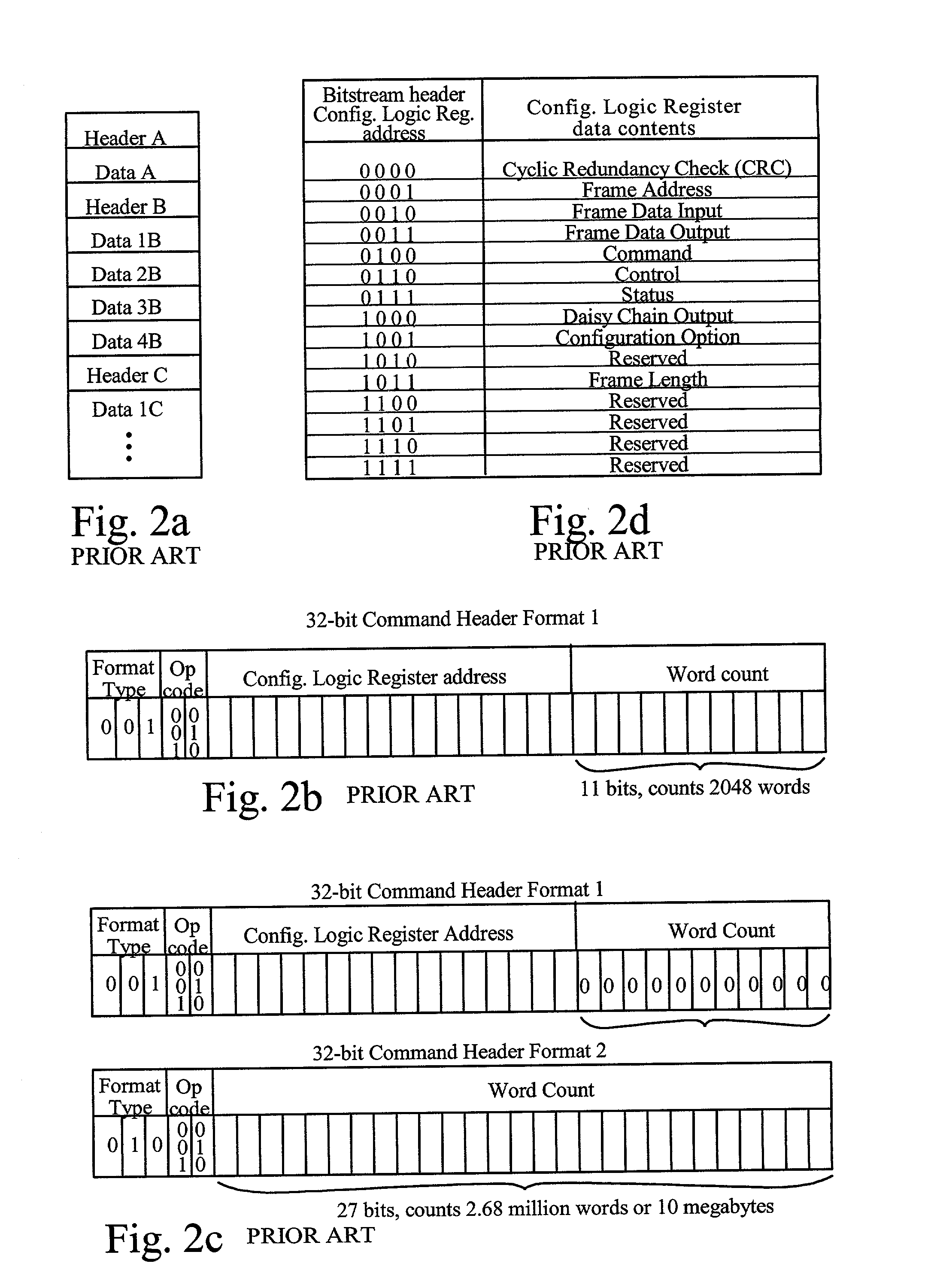Error-checking and correcting decryption-key memory for programmable logic devices
a programmable logic and decryption key technology, applied in the direction of unauthorized memory use protection, pulse technique, instruments, etc., can solve the problems of design effort being copied by someone else, design implementation in plds is so complex, and it takes months to complete and debug a design to be implemented,
- Summary
- Abstract
- Description
- Claims
- Application Information
AI Technical Summary
Benefits of technology
Problems solved by technology
Method used
Image
Examples
Embodiment Construction
[0047]FIG. 1 shows a prior art structure for an FPGA 10. The FPGA includes programmable logic 11, typically comprising (1) logic blocks with lookup-table combinational logic function generators, flip-flops for storing lookup table outputs and other values, and multiplexers and logic gates for enhancing the logic ability of the programmable logic (2) routing lines and programmable interconnection points for routing signals around the FPGA, and (3) input / output blocks for driving signals between the routing lines and the external pins of the FPGA. The above-listed elements are not shown here, but are described by Young in U.S. Pat. No. 5,933,023, entitled “FPGA Architecture Having RAM Blocks with Programmable Word Length and Width and Dedicated Address and Data Lines”, which is incorporated herein by reference.
[0048]The FPGA also includes configuration memory 12 for turning on routing transistors, controlling multiplexers, storing lookup tables, and controlling the input / output blocks...
PUM
 Login to View More
Login to View More Abstract
Description
Claims
Application Information
 Login to View More
Login to View More - R&D
- Intellectual Property
- Life Sciences
- Materials
- Tech Scout
- Unparalleled Data Quality
- Higher Quality Content
- 60% Fewer Hallucinations
Browse by: Latest US Patents, China's latest patents, Technical Efficacy Thesaurus, Application Domain, Technology Topic, Popular Technical Reports.
© 2025 PatSnap. All rights reserved.Legal|Privacy policy|Modern Slavery Act Transparency Statement|Sitemap|About US| Contact US: help@patsnap.com



